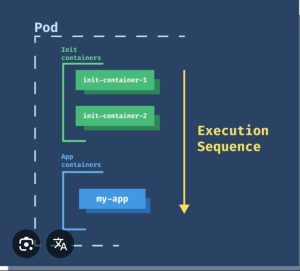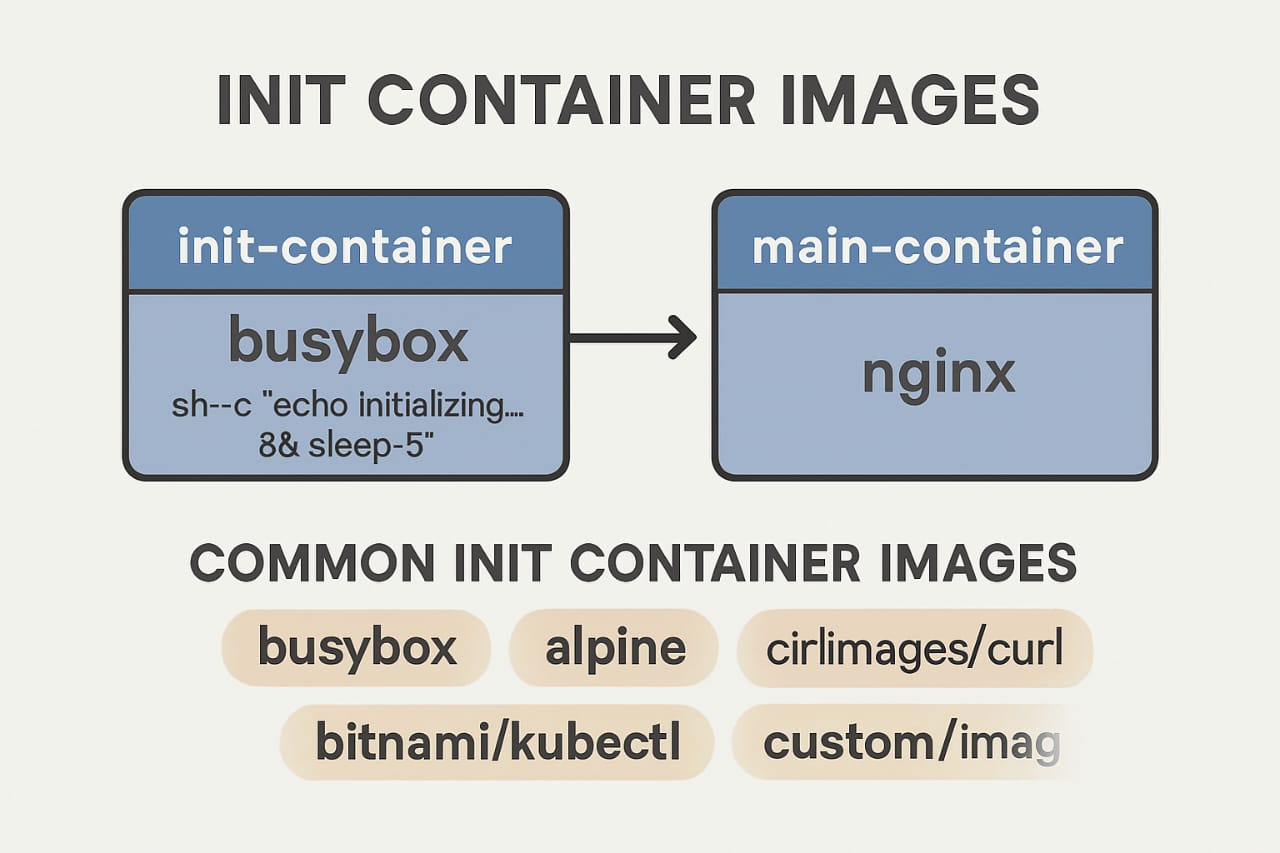1. What Are Init Containers in Kubernetes?
Init Containers in kubernetes are special containers in a Pod that run to completion before any of the app’s main containers start.
Key points:
-
They always run before normal containers.
-
They run sequentially — one after another.
-
If an init container fails, Kubernetes restarts the Pod until it succeeds.
They’re defined in the Pod spec under the initContainers field, separate from the main containers section.

2. Why Use Init Containers in kubernetes ?
While you could put setup scripts in your main container, init containers offer several advantages:
-
Separation of Concerns – Keep init logic separate from the main app logic.
-
Security – Run with different permissions than the main container.
-
Reusability – Use existing images for setup tasks.
-
Failure Isolation – If an init container fails, the main container never starts.
-
Dependency Checks – Wait for a database or service to be ready before starting the app.
3. How Init Containers in kubernetes Work
The lifecycle is straightforward:
-
Pod starts.
-
Kubernetes runs the first init container.
-
Once it completes successfully, the next init container starts.
-
When all init containers finish, Kubernetes starts the main application containers.
If any init container fails, Kubernetes restarts the Pod (including init containers) until they all pass.
4. Real-World Use Cases for Init Containers in kubernetes
Here are common scenarios where init containers shine:
-
Database Migration: Run schema migrations before starting the app.
-
Configuration Fetching: Download config files from a remote service.
-
Waiting for Dependencies: Wait until a service or API is reachable.
-
Security Setup: Load SSL certificates or keys before the app runs.
-
Custom Initialization Logic: Any one-time setup task.
5. Init Container vs Regular Container
| Feature | Init Container | Regular Container |
|---|---|---|
| Execution | Runs before app starts | Runs alongside app |
| Number per Pod | One or more, sequentially | One or more, in parallel |
| Restart behavior | Retries until successful | Restarts as per policy |
| Purpose | Initialization tasks | Application logic |
6. Example: Using Init Containers
Here’s a Pod definition that uses an init container to wait for a database before starting the app.
How it works:
-
The init container (
wait-for-db) uses BusyBox to repeatedly check ifmy-databaseservice is reachable. -
Once it is, the init container exits successfully.
-
The main app container (
myapp-container) starts.
7. Multiple Init Containers Example
You can chain multiple init containers:
In this case:
-
setup-configruns first. -
Once it’s done,
migrate-dbruns. -
Only after both succeed, main containers start.
8. Best Practices for Init Containers
-
Keep them lightweight – Use small images (like
busyboxoralpine) when possible. -
Make them fail fast – Avoid long timeouts unless necessary.
-
Log output clearly – Helps debugging if init fails.
-
Avoid heavy dependencies – Only include what’s needed for initialization.
-
Use environment variables – Pass configs without hardcoding.
9. Debugging Init Containers
If your init container fails, check logs:
kubectl logs <pod-name> -c <init-container-name>
You can also describe the Pod for more info:
10. Conclusion
Init containers in Kubernetes are a powerful tool for preparing your environment before your application starts. They help ensure that dependencies are ready, configurations are loaded, and the app starts in a stable state.
By separating initialization tasks from the main application, you get cleaner, more maintainable deployments.
11. Final Thoughts
Init containers in kubernetes are one of those Kubernetes features that can dramatically improve reliability when used correctly. They help separate setup logic from business logic, making your deployments cleaner, easier to debug, and more secure.
For more details Click Here
